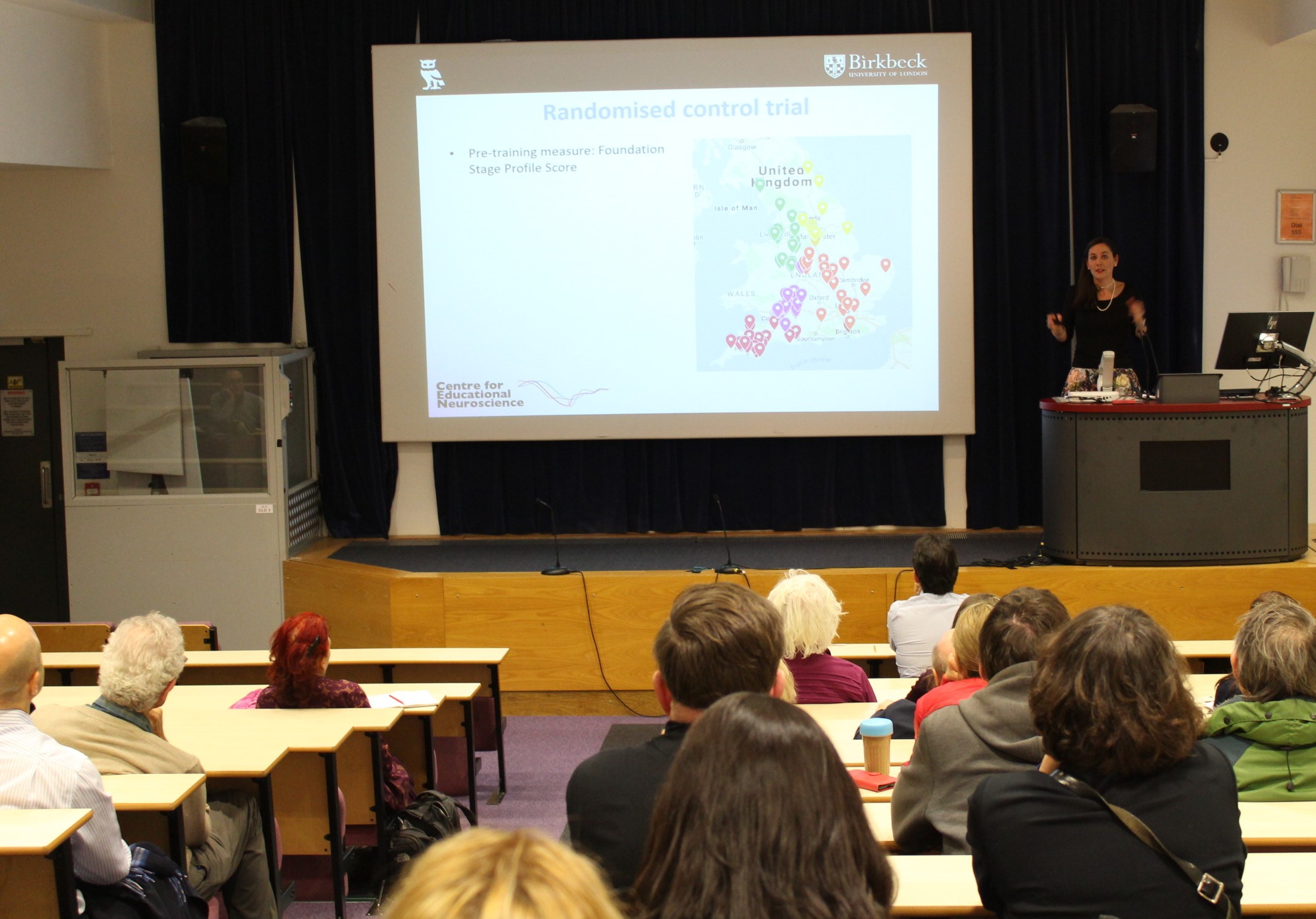Safina Akram, MA Creative Writing student, shares her experience of attending Birkbeck academic Dr Iroise Dumontheil’s lecture, that took place as part of the lecture series celebrating 100 years of Birkbeck joining the University of London.
I recently chose to spend my evenings at Birkbeck trying something different. I’d heard about Birkbeck’s 100th anniversary lecture series, celebrating 100 years of the College being part of the University of London. And being a Birkbeck student on an MA Creative Writing course, I thought, why not? It’ll be fun, something different and you never know I might learn something.
I entered the Clore building, to be greeted by the traditional lecture room. George Birkbeck – what would you think of your Birkbeck now? I wonder. What would you think of me coming through these doors? And what would you think of this lecture series?
The topic, you ask? ‘Using an educational neuroscience approach to improve maths and science achievement in primary school’ by Dr Iroise Dumontheil, Reader in Cognitive Neuroscience at Birkbeck. Quite a mouthful and yet in one hour, this topic will be justified, explained and I would walk out of this room having been enlightened on what it was all about.
The lecture began, and it was interesting to hear how the series of lectures came about, that each school chose its speaker and the topic. Dr Iroise Dumontheil was an articulate, informed and mesmerising speaker. She had grace and elegance, and I was enthralled by the way her hands moved. They conveyed her passion for her topic and we, her audience, were in safe hands, as step by step, we were led through her research.
The research took a ‘A stop and think approach.’ It’s interesting that neuroscience is working to understand how our minds work and what it is we can do to change the way we think. Dr Dumontheil spoke about humans having a rational side and an intuitive side and the difference between the two. She also talked about how the study was spread over different schools in the UK, the inclusion of children from lower socio-economic groups and the number of schools that took part. I took it all in, for it was captivating that research too is like a story.
The questions came from different parts of the room. The inevitable cross examination of the sample size was there at the end. This was followed by a question about the data. Why such an impact on Year 5 and Year 6 children? This is what education is about, ultimately, questions and answers.
We left the lecture hall and gathered around the table decked with drinks and snacks. I found myself conveniently next to someone, and so we began talking. She was an alumna, a grandmother, who like me had commuted to Birkbeck that day. We talked about the lecture, ate a few crisps, she told me how she too had been a student here. She explained the impact it had made to her life, and how she had been interested in this lecture because she has grandchildren and wanted to understand what the research indicated. I remember looking around, as people mingled and talked, from such diverse backgrounds, with their unique histories, here they were, in this space.
Reflecting now, I enjoyed the experience, I appreciated the opportunity of learning about something I hadn’t studied. I liked hearing the stories of others, the people on the stage, and the ones in the audience too. It led me to booking a place on the other 100th anniversary lectures, hearing from speakers Sir Ed Davey, Deputy Leader of the Liberal Democrats, on the climate emergency; Baroness Helena Kennedy QC on the rule of law, I remember her passion and how it was infectious, for at the end of that lecture I too wanted to be like her; and Professor Dame Marina Warner, Re-imagining Place, Re-weaving Story, one word is all I have, inspiring, I dream of being a writer like you.
George, I do believe, you would be rather pleased, if you could see your Birkbeck now.


